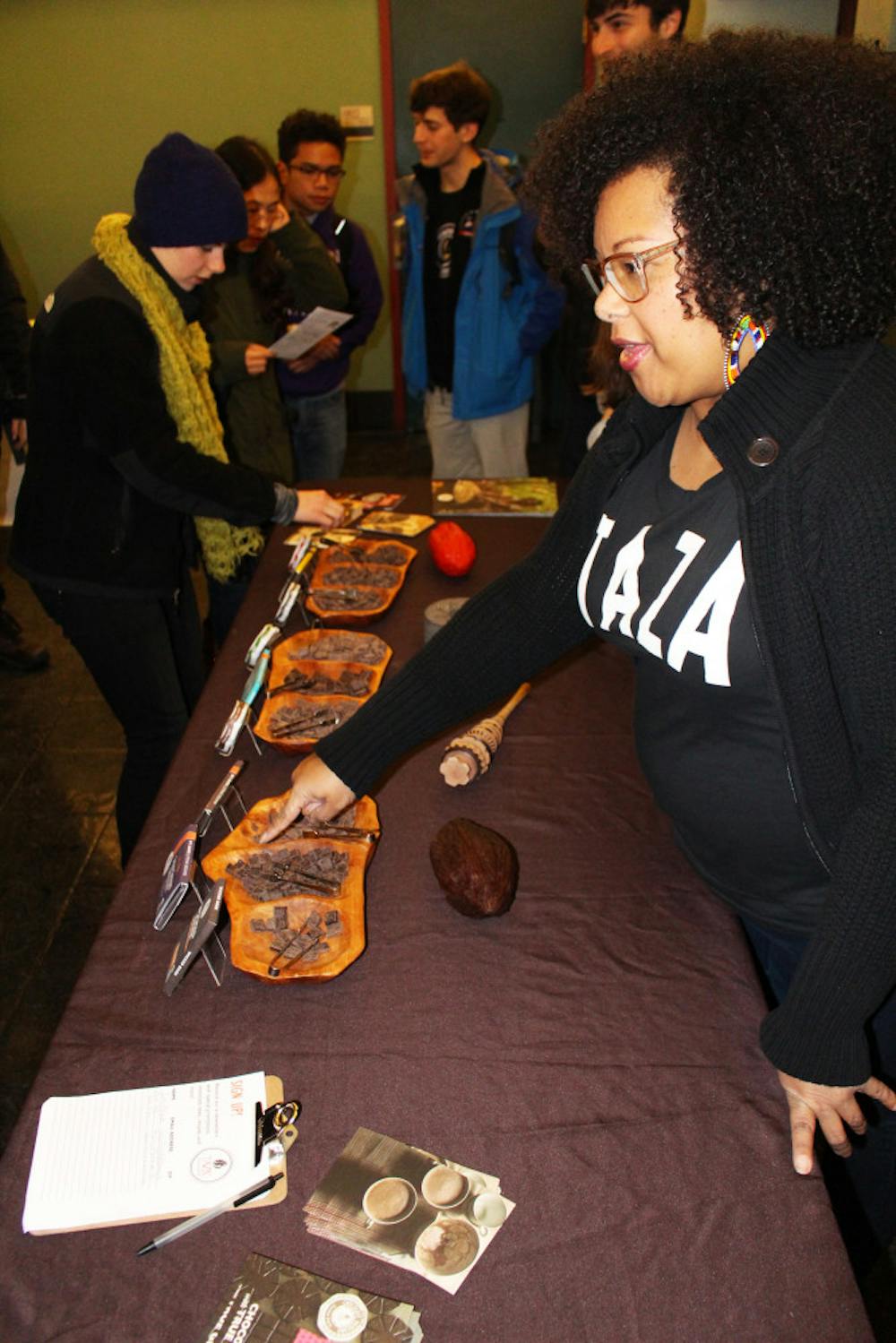Updated Feb. 16 at 2:15 p.m.
“It’s here at Brown where my ideas radically changed, and I found chocolate,” said Kathryn Sampeck — professor at Illinois State University and a long-term fellow of the John Carter Brown Library — Monday night in her lecture “How Chocolate Came to Be.” Sampeck traced chocolate back to its historical origins in sixteenth-century Mesoamerica through an archaeological lens. The lecture was sponsored by the Haffenreffer Museum of Anthropology.
Chocolate is a Guatemalan word that has never been translated, she said. It was in Guatemala that the familiar form of chocolate was founded. The chocolate seen in stores is the end product — a combination of cacao, achiote and sugar for sweetness. But when chocolate’s ingredients are broken down and traced to their historical roots, their origins are bittersweet.
“Chocolate is this interesting bundle of contradictions,” Sampeck said. “It does not have a sweet history, but rather a less than savory kind of past.”
Sampeck explained the narrative believed by many that chocolate was a product of colonialism in which Europeans capitalized on the potential that indigenous peoples didn’t realize. Yet, its definition and production in Europe and in Mesoamerica is much different. “People of different cultures created cacao identities,” Sampeck said, “chocolate is just one of many cacao productions.”
Cacao is not always solid. It is often found as a liquid extracted from a nut on the cacao tree to make a frothy beverage. Sometimes served hot, sometimes served cold, it is also frequently mixed with a variety of spices and flavors. In Mesoamerica, spicy, smoky and sweet cacao beverages are popular. Corn and floral umami mixes are also added to cacao for a richer, thicker texture.
Europeans have their own unique blend of cacao. The continent overall prefers a more pungent, earthy taste with musk, she said. One particular type of cacao mixture includes sweet floral notes with orange blossom and ginger. Yet within the continent, the cacao preferences are split up regionally. “Each country has a specific taste and a different profile,” Sampeck said, “but the English are the tastemakers.”
The taste of the cacao itself is much more ambiguous than expected. There is no single type of cacao: sweet cacao, honey cacao, cherry cacao, gruel-ish cacao and cold maize cacao. Gruel-ish cacao is “cacao mixed with corn gruel and is of a thick consistency,” whereas cold maize cacao is “served cold with cooked corn kernels and was important at social and religious ceremonies” in ancient Mesoamerica, Sampeck said.
Once Mesoamerica and Europe discovered the riches of cacao, the nut was quickly abused. Sampeck explained that by the mid-sixteenth century, cacao built the foundations of a social and political economy. “Cacao became a medium of exchange. People had the potential to accumulate money, and a hierarchy quickly emerged that created the privileged and the nouveaux riches.”
Cacao did more than facilitate the economy. It also contributed to the concept of investment and production in the labor market. “Cacao is a calculated decision. It is an investment of skills, knowledge and dedication, as it takes seven to eight years to reap the benefits,” Sampeck said.
The peak of the production of chocolate in Mesoamerica was between 1562 and 1615 in Izalco, a municipality in the western part of El Salvador. At this time, “chocolate was synonymous with money, wealth and power,” Sampeck said. With cacao running the economy, production took its toll on the native people. “There was an average of a 40 percent drop-off in the population,” Sampeck said.
Sampeck added that people all around the world were becoming chocoholics. “People say we are what we eat, but I think we eat what we are.”
Sampeck’s lecture “was an interesting look at the beginning of chocolate,” said Samantha Mayfield ’18. “And also there’s free chocolate samples.”
A chocolate tasting immediately followed the event. Taza Chocolate, a company based out of Somerville, Mass., laid out bowls full of the diverse types of chocolate that Sampeck explained in her lecture. One type of chocolate contained 87 percent cacao, creating a rich, bitter and dark taste. Another contained fruity cacao that left a sweeter aftertaste. One chocolate combined Haitian and Brazilian cacao.
“All of the Taza Chocolate is organic, stone-ground chocolate,” said an employee of Taza. She explained the different methods of refining the chocolate into its particular texture. “For a smoother texture, we further refine the chocolate and grind it down using huge stones. We use smaller stones to create a thicker texture.” She added that all Taza Chocolate is unique in that all of its products are soy-free and vegan.
“Chocolate is this superfood that crosses a lot of culinary boundaries,” Sampeck said, “and no matter where you go, there is always chocolate.”





